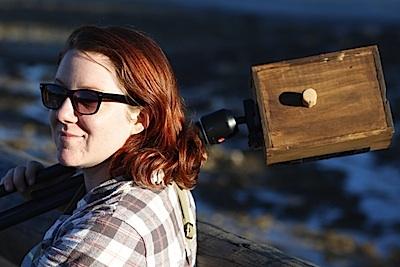With technology rooted in the 11th century, and a medium that has fallen out of mass appeal due to the advent of digital cameras, a California photographer aims to document the National Park System in a throw-back sort of way.
For Ashley Erin Somers, capturing national parks with a "pinhole" camera presents an opportunity to both reacquaint old, and inspire new, advocates and lovers of the parks.
"Pinhole" cameras, in short, are boxes with only a small hole in one side. Light passes through the hole, without benefit of a lens, and projects an image on film on the back of the box. The trick is knowing how big or small to make the hole, and how long to expose the film to the light coming through it.
"Without more people to fall in love with the outdoors, concrete and square tracts of grass will become what we're used to. We're lucky to have extraordinary outdoor places where we can escape to share our common history. Critics will say that these kinds of photographs have been done before," says Ms. Somers on her Kickstarter page seeking funding for her project. "They have. But for someone hard of hearing you have to keep repeating things to get a point across.
"It's amazing that there are places that have stayed the same over a hundred year span. If we hadn't protected these areas from development, there's no knowing what they would look like. This isn't just a photo book for others to look at. It is an example of what you can do with our nation's parkland. You can be inspired to create art, write novels, dance, or just meditate on their beauty."
Ms. Somers' plan calls for her to visit Joshua Tree, Grand Canyon, Bryce Canyon, Zion, Rocky Mountain, Big Bend and Everglades national parks during a 37-day run beginning next month. If all goes as planned, she hopes to have books of her photographs ready for delivery by Christmas.
But she realizes things might not go as hoped.
"One of the greatest risks of traditional black-and-white film photography is you don't know what has turned out until you develop. Digital photography lets you check as soon as you shoot and gives you the opportunity to take as many as you want, at low cost, until you get it right," Ms. Somers explains. "With shooting film, it is possible for me to get back from the trip, and after developing it, realize I haven't taken as many extraordinary shots as I expected. There's even a chance of enormous uh-ohs, such as boxes of film getting accidentally fogged by light, or our car breaking down."
As of Sunday, Ms. Somers had attracted $3,140 in contributions towards her $10,000 goal. You can add to that at this site.




Add comment